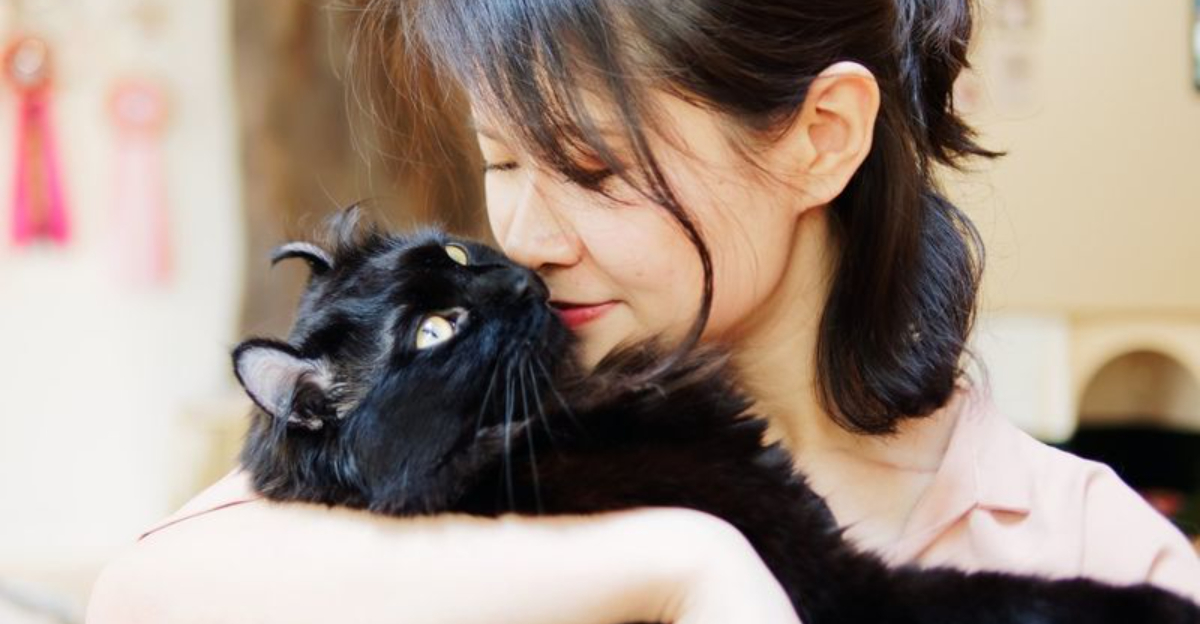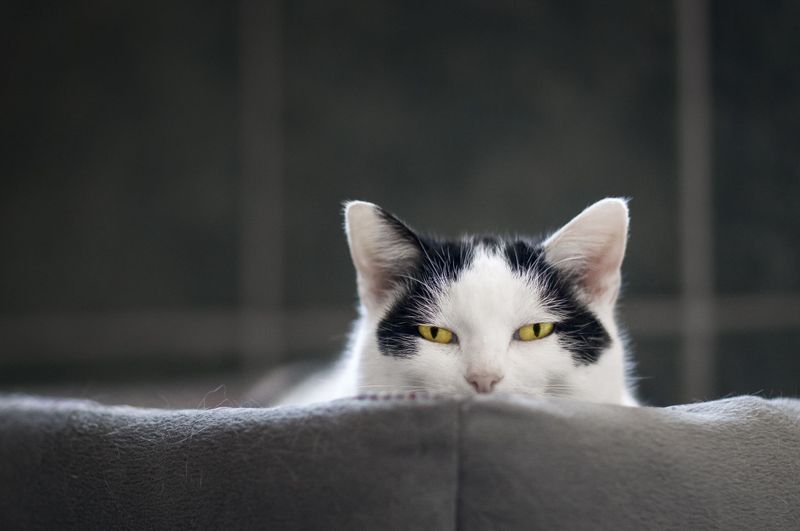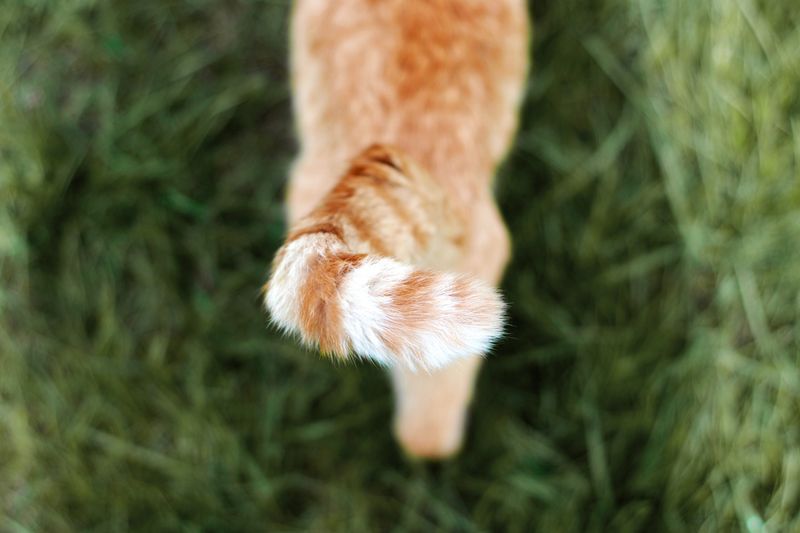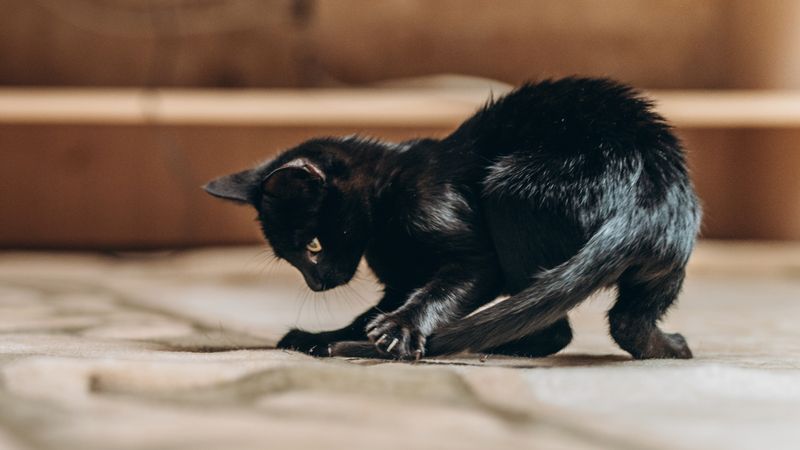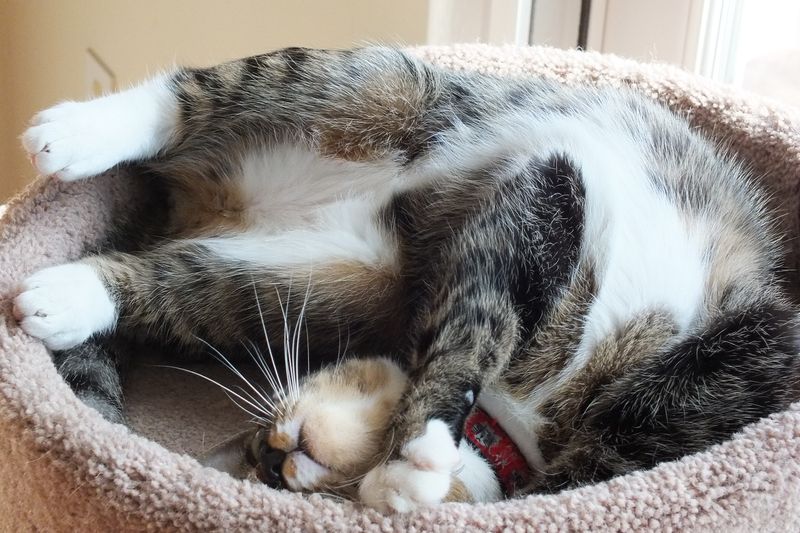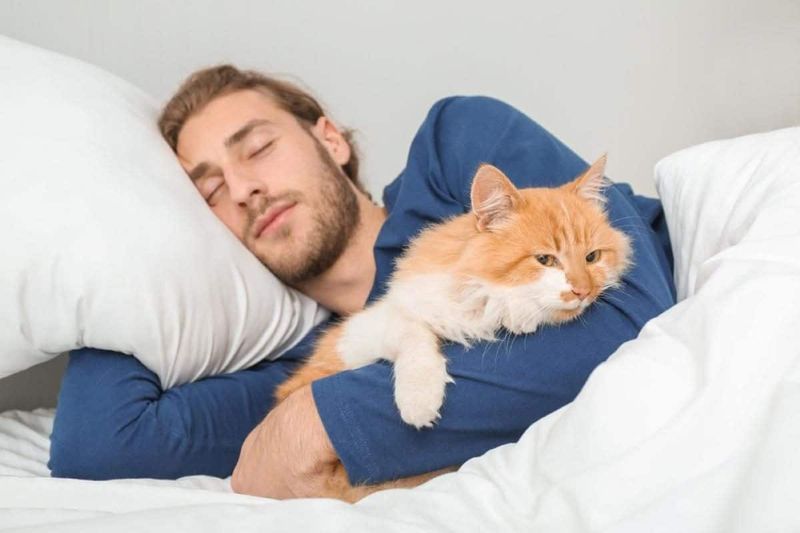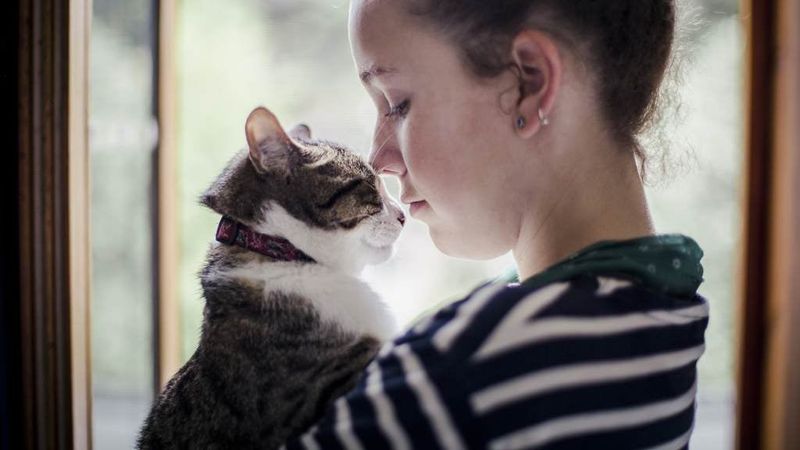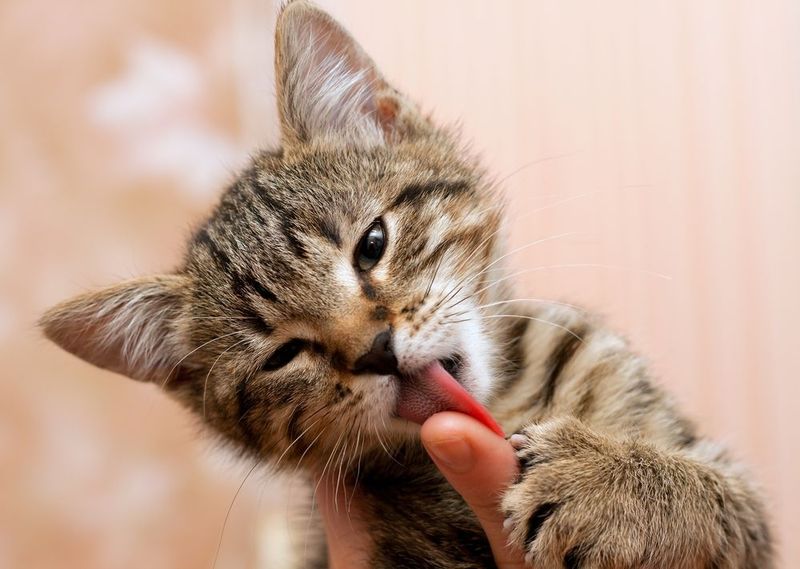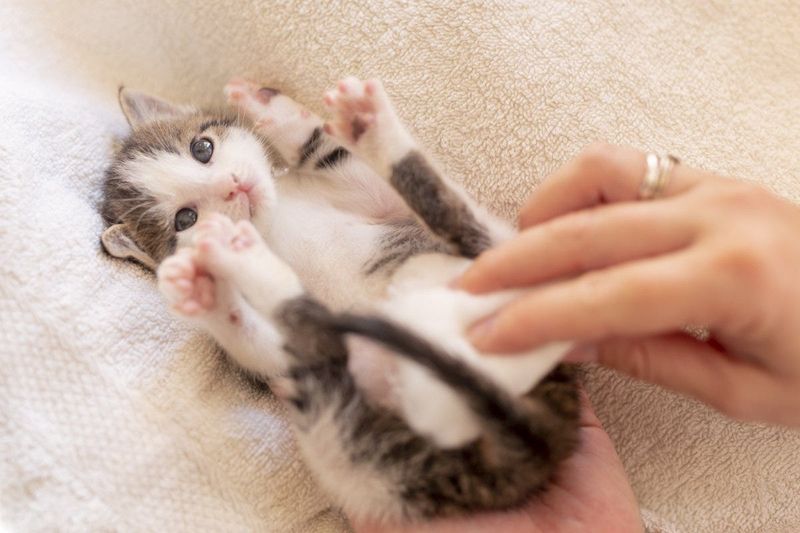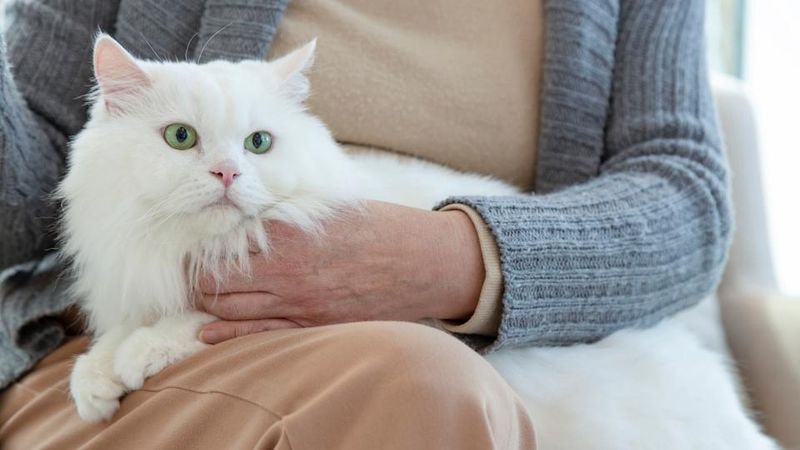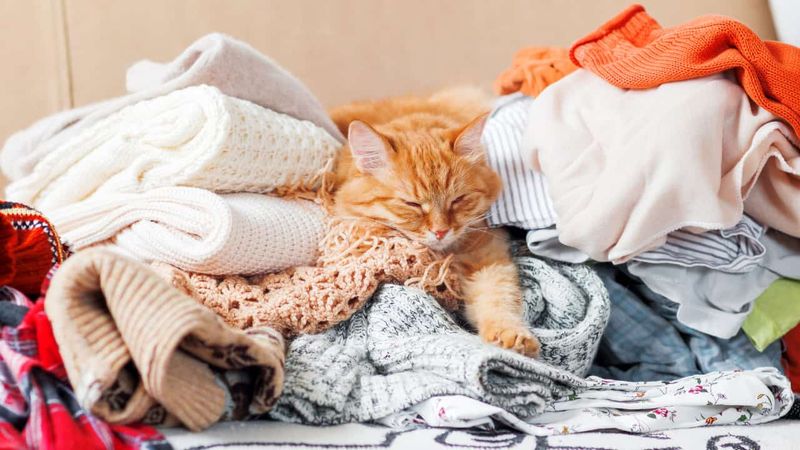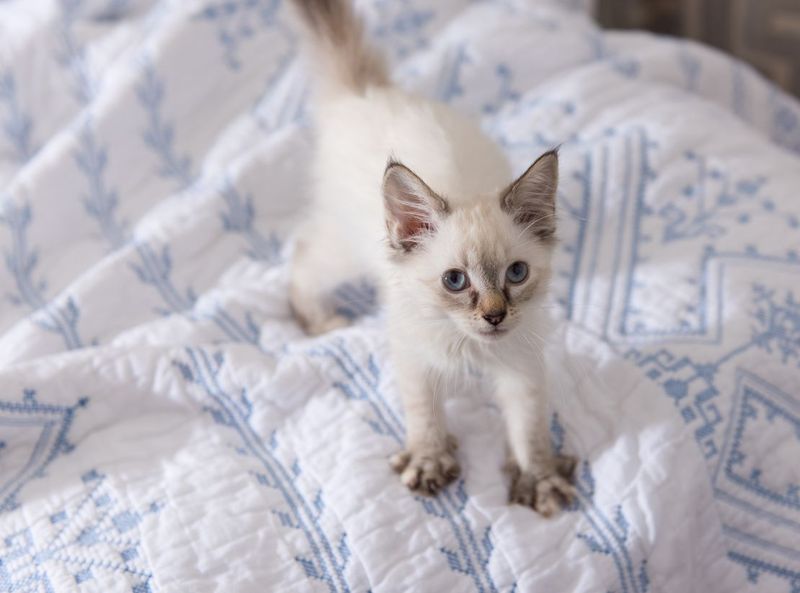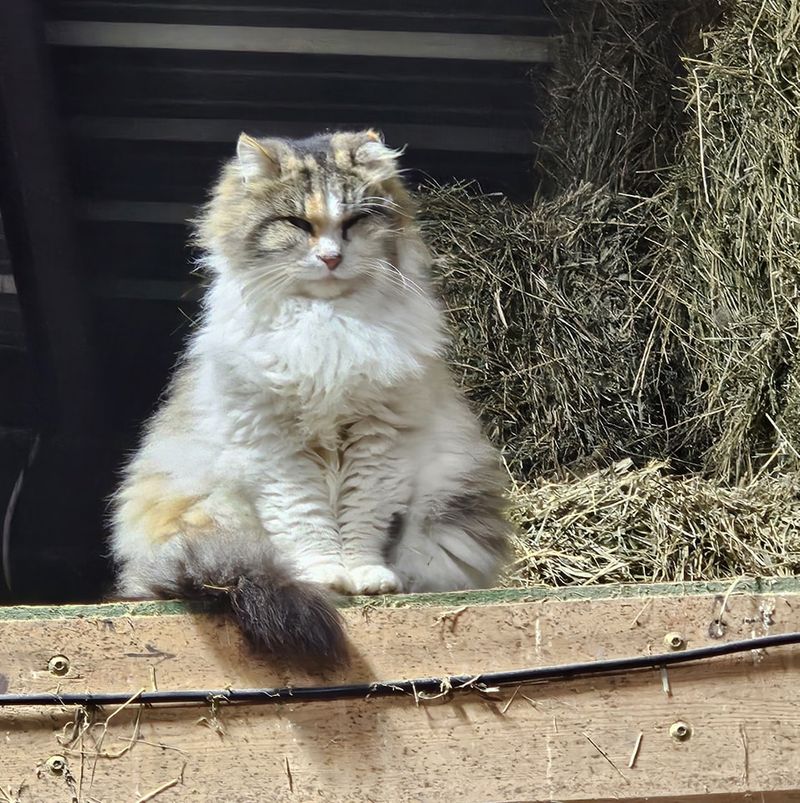📖 Table of Content:
- 1. Slow Blinks That Speak Volumes
- 2. Tail Talk That Shows Trust
- 3. Gentle Headbutts of Affection
- 4. Bringing Gifts to Your Doorstep
- 5. Kneading Your Lap Like Dough
- 6. Purring That Heals Both of You
- 7. Following You to the Bathroom
- 8. Sleeping Near You (Not On You)
- 9. Chatty Greetings When You Return
- 10. Grooming Sessions Just for You
- 11. Exposing Their Belly Cautiously
- 12. Choosing Your Lap Over Warm Spots
- 13. Gentle Paw Touches That Request Attention
- 14. Claiming Your Personal Items
- 15. Waiting by the Door (But Not Frantically)
- 16. Sharing Your Personal Space Boundaries
- 17. Making Biscuits on Your Belongings
- 18. Supervising Your Activities From Nearby
- 19. Greeting You With an Upright Tail
Cats often carry the label of being distant or self-reliant, yet their behavior reveals a quiet depth of emotion. Affection is not absent—it’s simply offered in ways that are less obvious than tail wags or excited greetings. Their gestures of love are gentle, thoughtful, and easy to overlook.
Unlike pets that crave constant attention, cats prefer to show care through subtle signals. A slow blink, a soft purr, or a gentle head nudge can speak volumes. These quiet acts reflect trust and connection, even if they come without fanfare.
Understanding feline affection means learning to notice the small things. Each touch, look, or shared space holds meaning when it comes from a cat. Their way of loving may be understated, but it’s deeply sincere.
1. Slow Blinks That Speak Volumes
Cat experts call it the “kitty kiss” – when your cat looks at you and slowly closes then opens their eyes. This gesture is actually a significant sign of trust and affection in the feline world.
In cat language, closing their eyes makes them vulnerable, so when they do this around you, they’re saying they feel safe and comfortable. Many cat owners instinctively return the slow blink, creating a special moment of connection.
Next time your cat gives you this dreamy look, try blinking back slowly. You’ll be speaking their love language without saying a word!
2. Tail Talk That Shows Trust
A cat’s tail serves as their emotional barometer, and a tail held high with a slight curve at the tip signals happiness and confidence. When your feline friend approaches with their tail standing tall like a furry flagpole, they’re displaying their pleasure in seeing you.
Some cats even wrap their tails around your leg or arm – the feline equivalent of holding hands. This physical connection demonstrates deep trust and bonding.
Pay attention to these tail signals during your daily interactions. Your cat is constantly communicating their feelings toward you through these subtle tail positions.
3. Gentle Headbutts of Affection
Those little nudges against your hand, leg, or face are more than just attention-seeking bumps. Known as “bunting,” this behavior involves your cat marking you with scent glands located on their head.
Cats reserve this special gesture for their favorite people and fellow felines they consider family. By transferring their scent to you, they’re essentially labeling you as part of their trusted circle.
The strength of the headbutt often indicates the depth of the bond. A forceful bump shows your cat feels especially connected to you, creating their own unique form of a loving embrace.
4. Bringing Gifts to Your Doorstep
Finding a dead mouse or mangled toy on your doorstep might seem gross, but for your cat, it’s the ultimate expression of love. Outdoor cats especially show affection through hunting and gift-giving behaviors.
Your feline friend isn’t trying to disgust you – they’re actually sharing their hunting success and providing for their family member (that’s you!). In cat society, this ranks as a high compliment.
Indoor cats often substitute real prey with toys, bringing their favorite stuffed mouse or crinkle ball to your bed. Both behaviors stem from the same place – a desire to contribute to their human’s wellbeing.
5. Kneading Your Lap Like Dough
That rhythmic pushing of paws against your lap or belly might occasionally catch you with a claw, but it’s actually a throwback to kittenhood. Kneading behavior develops when nursing to stimulate milk flow from mother cats.
When adult cats knead on you, they’re expressing contentment and security similar to what they felt as kittens with their mother. The behavior indicates your cat feels safe, protected, and deeply bonded with you.
Some cats even purr or drool while kneading, showing they’ve reached peak relaxation. Consider it the highest compliment – your lap provides the same comfort as their mother once did.
6. Purring That Heals Both of You
The soothing rumble of a cat’s purr works like a natural stress reliever. While cats purr for various reasons, doing so while cuddled next to you signals deep contentment and affection.
Scientists have discovered that purring occurs at frequencies between 25 and 150 Hertz, which can promote healing and reduce stress. Your cat’s purrs actually benefit both of you – they’re literally healing your body while expressing their love.
The loudness of purring often correlates with happiness levels. A cat that erupts into thunderous purrs upon seeing you is expressing the feline equivalent of jumping for joy.
7. Following You to the Bathroom
Cats value privacy for themselves, yet many insist on accompanying their humans to the bathroom. This behavior stems from their protective instincts and desire to keep you safe during vulnerable moments.
Unlike clingy dogs who might follow from separation anxiety, cats follow selectively to places they deem important. The bathroom represents a strange territory with running water and unusual sounds that might intrigue them.
Your cat’s bathroom visits also demonstrate trust – they’re comfortable enough to join you in confined spaces. While it might feel invasive, your feline friend is actually showing care by keeping watch during what they perceive as a vulnerable moment.
8. Sleeping Near You (Not On You)
Cats spend roughly 15 hours daily sleeping, making their choice of sleeping location significant. When your cat chooses to sleep near you rather than in another cozy spot, they’re making a deliberate choice based on trust and affection.
Unlike dogs who might sprawl directly on top of you, cats often prefer sleeping close by – perhaps at the foot of your bed or on a nearby chair. This distance maintains their independence while still keeping you within protective range.
The vulnerable position they assume while sleeping – belly exposed or completely relaxed – shows they feel utterly safe in your presence. It’s their way of saying, “I trust you enough to let my guard down completely.”
9. Chatty Greetings When You Return
The distinctive meows, chirps, and trills that welcome you home speak volumes about your cat’s attachment. Each cat develops a special vocalization pattern used exclusively for their favorite humans.
These greeting calls differ significantly from the sounds cats make toward strangers or other animals. Your cat might even develop a specific “hello” meow that you’ll recognize as their special greeting just for you.
The intensity and duration of these vocalizations often indicate how much they missed you. A cat that runs to the door chattering away is expressing genuine excitement at your return – their version of an enthusiastic welcome home party.
10. Grooming Sessions Just for You
Those scratchy licks on your hand or face represent one of the highest forms of feline affection. Cats only groom individuals they consider part of their family group, making this behavior particularly special.
Social grooming strengthens bonds between cats in the wild, and your pet extends this important ritual to you. They’re essentially treating you as another cat – the ultimate compliment in their world.
Sometimes the grooming might feel rough due to their barbed tongues, but the intention is pure love. Your cat is caring for you the only way they know how, just as their mother once cared for them.
11. Exposing Their Belly Cautiously
A cat’s belly represents their most vulnerable area, containing vital organs with minimal protection. When your cat rolls over and shows their tummy, they’re demonstrating extraordinary trust in your presence.
Unlike dogs, who often enjoy belly rubs, cats display their bellies primarily as a sign of security rather than an invitation to touch. The exposure signals they feel completely safe around you – a profound compliment from a naturally cautious animal.
Some cats do welcome gentle belly contact, but even those who swat your hand away are still showing love through their initial vulnerable display. Their willingness to appear defenseless around you speaks to their deep sense of security in your relationship.
12. Choosing Your Lap Over Warm Spots
Cats naturally seek out the warmest locations in a home – sunny windowsills, heat vents, or freshly dried laundry. When your cat bypasses these prime warming spots to curl up on your lap instead, they’re making a meaningful choice.
This decision weighs comfort against companionship, with your cat prioritizing connection with you. They’re essentially saying your presence provides something more valuable than physical comfort alone.
The frequency of lap visits often increases as your bond strengthens. A cat that regularly chooses human contact over other cozy options is expressing a preference for your company that transcends their natural heat-seeking behavior.
13. Gentle Paw Touches That Request Attention
A soft paw tap on your arm or leg represents your cat’s polite way of requesting attention without being demanding. Unlike dogs, who might bark or jump persistently, cats often use these gentle touches to initiate interaction on their terms.
The delicate nature of these paw taps demonstrates respect for your personal space. Your cat is essentially asking permission to engage rather than forcing interaction.
Most cats reserve these gentle requests for their most trusted humans. The restraint shown in these subtle gestures – often without claws – indicates a deep understanding of human boundaries and a desire for mutual consent in your interactions.
14. Claiming Your Personal Items
Finding your cat lounging on your freshly laundered clothes or laptop might seem inconvenient, but it’s actually a form of social bonding. Cats are attracted to items carrying your scent, finding comfort in surrounding themselves with your familiar smell.
By lying on your belongings, they’re also mixing their scent with yours – a behavior called “scent blending.” This creates a group scent that marks both you and your cat as part of the same family unit.
The items they choose often reveal their attachment level. A cat that sleeps on your pillow or favorite sweater is seeking the items most strongly connected to your personal scent, showing how much they value your presence even when you’re away.
15. Waiting by the Door (But Not Frantically)
Cats who position themselves near entry points before your expected arrival time demonstrate remarkable attachment without desperation. Unlike dogs who might pace anxiously, cats often wait with calm patience, perhaps grooming or napping lightly until they hear your approach.
This behavior indicates they’ve memorized your routine and look forward to your return. Many cat owners report their pets appearing at the door minutes before they arrive home, suggesting an awareness of your schedule.
The relaxed nature of this waiting period shows healthy attachment – they miss you without experiencing separation distress. Your cat has found the perfect balance between independence and affection.
16. Sharing Your Personal Space Boundaries
A cat’s world is divided into spaces of safety, solitude, and routine. Being granted access to one of these chosen spots means the cat sees you as part of its inner circle. It’s a subtle but powerful form of affection.
This space-sharing often happens gradually as trust builds. Your cat might first allow you nearby, then eventually welcome direct contact within their special domain.
The progression from maintaining strict personal boundaries to inviting you into their safe spaces demonstrates evolving trust. When your independent feline chooses to include you in their carefully guarded territory, they’re expressing a level of acceptance reserved only for their most trusted companions.
17. Making Biscuits on Your Belongings
The rhythmic kneading motion cats make on blankets, pillows, or clothing items serves multiple purposes beyond comfort. This behavior, often called “making biscuits,” marks objects with scent glands in their paws, claiming these items as safe and familiar.
When your cat kneads your personal belongings, they’re creating a comforting environment filled with both your scents. The behavior indicates they associate your possessions with security and contentment.
The intensity and duration of kneading often correlate with emotional attachment. A cat that enthusiastically makes biscuits on your favorite sweater is essentially creating a comfort zone that combines their scent with yours – the feline equivalent of a friendship bracelet.
18. Supervising Your Activities From Nearby
When a cat settles nearby to quietly watch what you’re doing, it’s a subtle sign of connection. Whether lounging on a windowsill or the edge of the tub, they’re choosing to be part of your world. Their silent presence reflects both curiosity and affection.
This monitoring behavior stems from both curiosity and protective instincts. They’re keeping tabs on you while maintaining their independence – the perfect balance of connection without clinginess.
The consistent presence during your daily routines demonstrates how deeply integrated you are in their world. A cat that regularly positions itself to watch your activities is saying, “I find you fascinating and want to be part of your life, even if just as an observer.”
19. Greeting You With an Upright Tail
The vertical question mark shape of a cat’s tail during greetings serves as their most sincere welcome sign. This distinctive posture – tail straight up with a slight curve at the tip – appears almost exclusively when cats greet someone they genuinely like.
Cat behavior experts consider this the most reliable indicator of feline happiness and confidence. The upright position exposes scent glands at the base of their tail, essentially offering you their personal signature.
Watch for this tail position when you arrive home or enter a room. A cat that consistently greets you with this upright flag is displaying the feline equivalent of a beaming smile – a genuine, unrestrained expression of delight at your presence.
